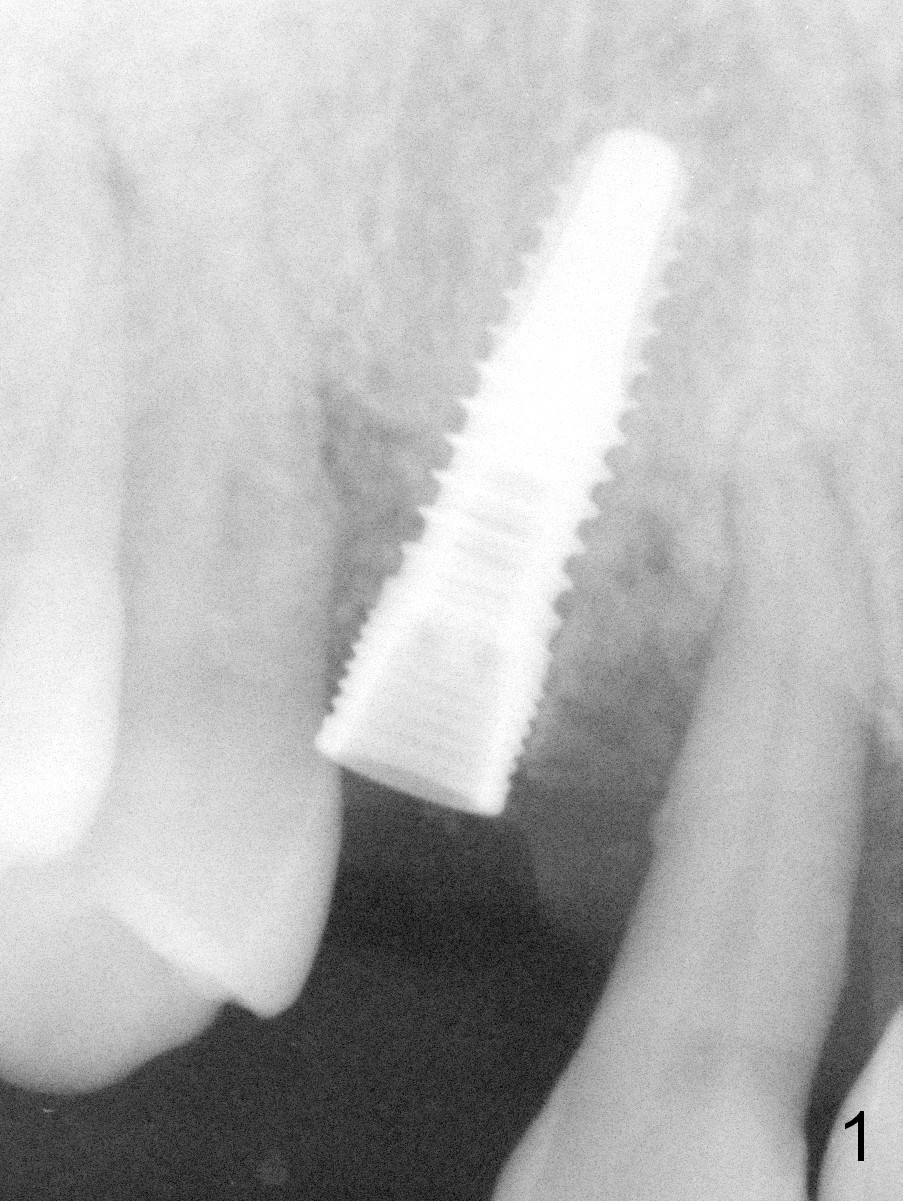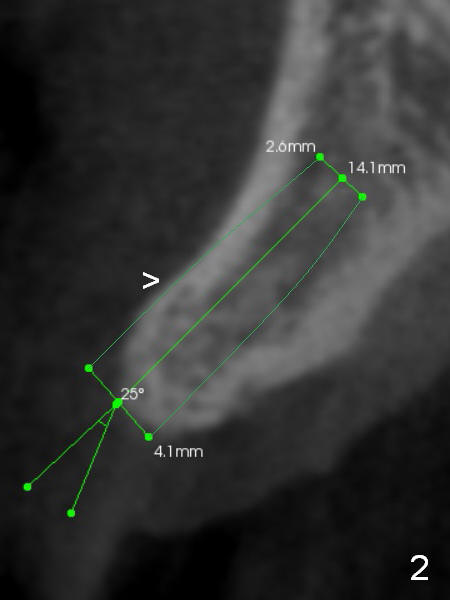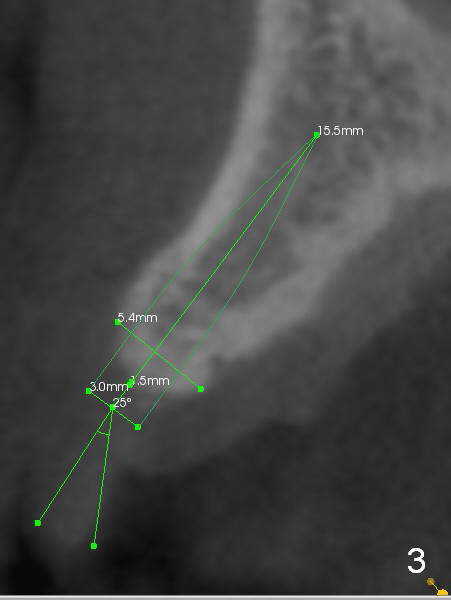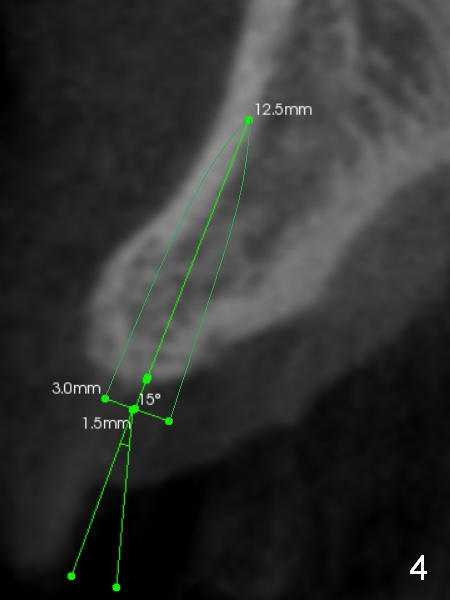



 |
 |
 |
 |
Anterior Implant: Size, Position and Angulation
As planned, a 4.1x14 mm implant is placed with the aid of bone expansion (Fig.1). The buccal plate feels vibration during bone expansion or drilling. Insertion torque is ~35 Ncm. An angled abutment (25°) is placed. The patient is not pleased with cosmetics. She feels pain on lateral movement. It is possible that the buccal plate perforates (Fig.2 >). In fact intraop finding confirms that the middle section of the buccal plate has vibration when the implant is being placed, although the coronal end of the plate is intact.
It appears that blind bone expansion is tricky. It should be much safer to place a smaller implant, e.g., 3x17 mm one piece implant (Fig.3). There will be more restorative advantage if a shorter implant (3x14 mm) is placed more lingually (coronally), while the apical end more buccally (Fig.4).
The patient will return soon. If she agrees, the following is a plan.
Make a relatively large incision to see how much perforation is. If it is the case, use torque wrench to remove the implant. Find a new area (lingual) to place an implant as shown in Fig.4. If it is stable, harvest a small piece of chin graft and use a screw for fixation. If there is soft tissue deficiency, collect connective tissue graft. Arrange a whole day for the procedure. Is the assumption right?
Return to
Upper
Canine Immediate Implant
Xin Wei, DDS, PhD, MS 1st edition 03/15/2015, last revision 11/17/2019